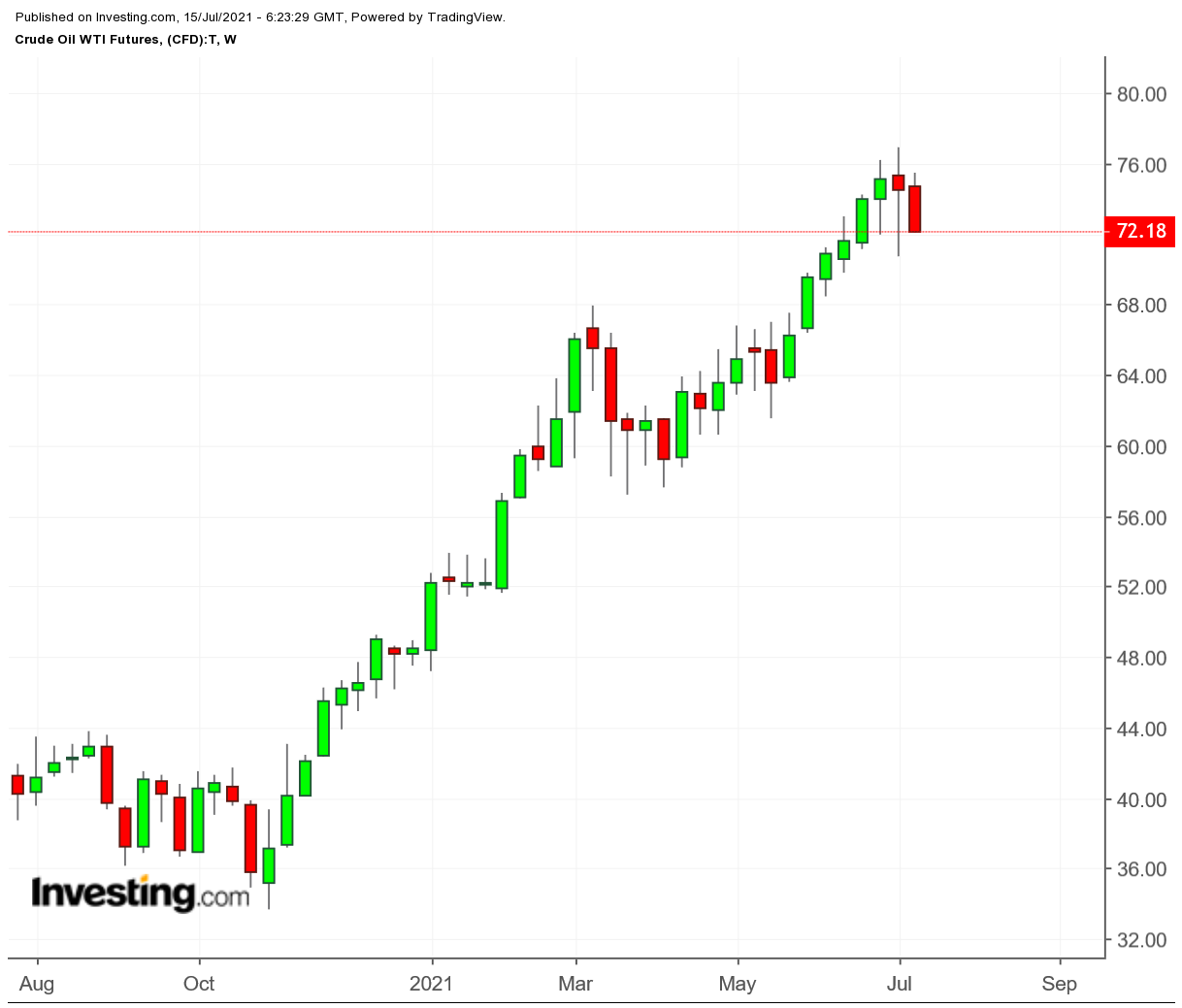Street Calls of the Week
This year, oil prices have been driven much more by demand numbers and headlines than by actual supply. In fact, oil demand has moved significantly with forecasts also expecting more change, while supply has remained relatively steady.

United States data provides important indicators of oil demand, in part because weekly data in the U.S. is so readily available.
This spring and summer, oil consumption has made strong gains toward pre-pandemic levels in the U.S., which has led many to hope for normal or near-normal demand as we move into the second half of the year. As a result, oil prices have moved higher. That said, there are now some indications that demand is not going to get as close to pre-pandemic levels as was previously expected.
Traders must keep an eye on the data.
There was a great deal of optimism over oil demand last week when the EIA, an office within the U.S. government, released its data for the week that ended July 2. This report showed that the amount of gasoline supplied to stations in the U.S. was 10 million bpd. This data is considered indicative of demand. The number represents the largest week-by-week increase since 1990. The 10 million bpd was higher than any number reported in 2019, before the pandemic.
For most of 2021, U.S. gasoline supplied has mirrored the seasonal patterns of 2019, but at lower levels. Gasoline deliveries increased around the end of May, which marks the beginning of the summer driving season. At that point, the gasoline amounts were closing the gap with 2019 levels.

At the beginning of July, the 10 million bpd transferred to stations surpassed 2019 levels for the same week. This fueled arguments among traders and analysts, with some claiming that the U.S. had finally returned to pre-pandemic levels of gasoline consumption.
However, traders should keep in mind that the increase in gasoline supplied to stations was also in anticipation of the July 4 weekend holiday, typically a time of high travel in the United States. The amounts provided to stations do not actually correlate directly with consumer consumption.
The data for the following week were just released on Wednesday, and the numbers for gasoline distributed to stations dropped back to 9.28 million bpd. Analysts expected this supplied number to be higher. In addition, the data indicated that stores of gasoline and distillates (diesel fuel) in the U.S. increased.
Refinery runs also decreased slightly. Gasoline stocks only increased by 1 million barrels, but that—plus the slight drop in refinery runs—could mean that U.S. gasoline consumption has already hit its highest point this summer. All of this news raises the possibility that we will start to see demand drop and perhaps a widening of the gap between 2019 and current levels.
The U.S. did see a large drop in crude oil stores last week. The decrease was nearly 8 million barrels. But that is not actually a good gauge for U.S. demand, because U.S. crude oil exports hit 4 million bpd for only the 5th time ever.
This may be due to an increase in international demand for WTI, which is cheaper than Brent. (Note: the difference between the Brent benchmark price and WTI price has narrowed recently, but Brent was likely significantly higher than WTI when this crude was purchased).
One week’s data is not enough to determine a trend, so traders must keep a close eye on where the data on gasoline supplied (meaning implied demand) head over the next few weeks.
Traders must also watch gasoline stores and refinery utilization. The next inflection point for U.S. demand will be Labor Day, which marks the end of the summer driving season and is typically a time of high gasoline demand and travel. That holiday comes on September 6 this year.
It’s worth noting that the COVID pandemic rates won’t take all of the blame if demand numbers turn out lower than expected. Higher gasoline prices and inflation are also affecting consumption in the U.S. These cannot be ignored.
